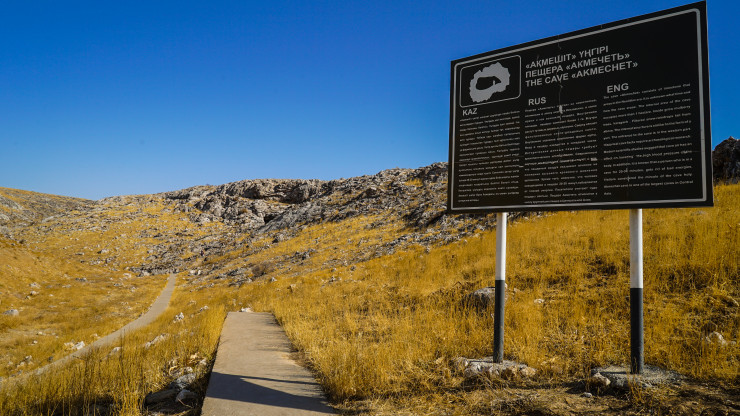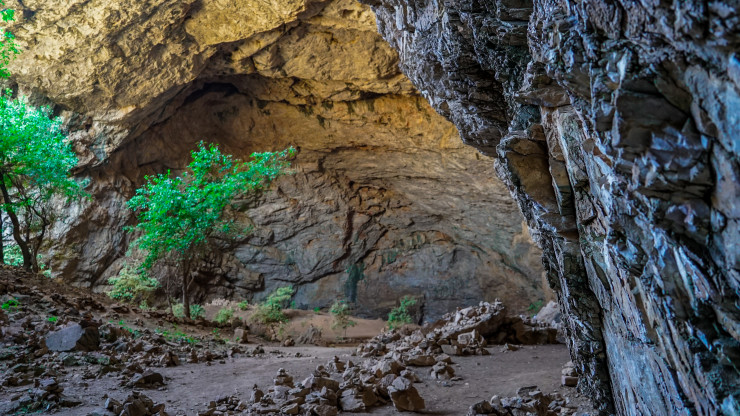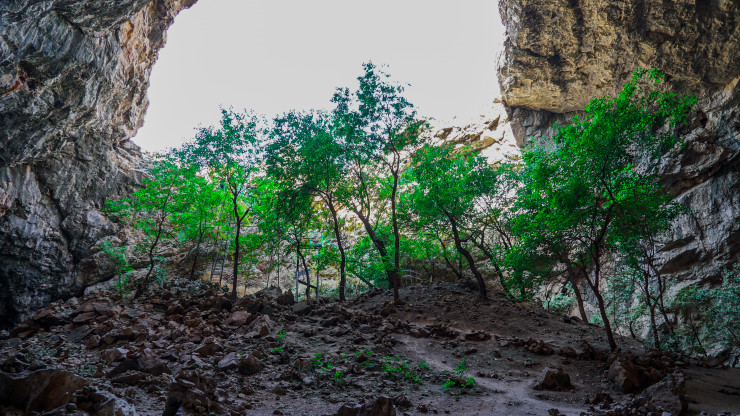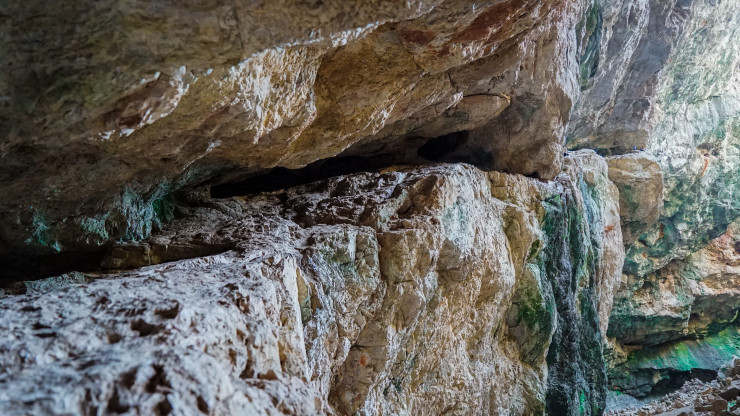02 November 2021
Exploring the Turkestan region as a tourist, you can find not only local attractions. There are unique places for the whole of Kazakhstan, and one of them is the mysterious cave of Akmechet, or Akmeshit-aulie. In this article we will tell you about the legends and beliefs associated with this important shrine throughout Central Asia.
The cave of Akmechet, which means “White Mosque” in Kazakh, is essentially a temple created by nature itself. It is located five kilometers from the village of Kenestobe, Turkestan region, about 150 kilometers from Shymkent. This place has been revered since ancient times – largely due to the charming atmosphere, indescribable emotions, amazing surroundings and even a completely unique climate.

It should be noted that there is no exact data on what century and under what circumstances this cave was formed, although in 1973 it was studied by geologists from Moscow, and even earlier by historians. The first suggested that the cause of the appearance of the Shark was the fall of a meteorite. The latter say that the stones from which the cave was formed in the limestone layer belong to the Eneolithic period, that is, the Copper-Stone Age. Anyway, today Ak Mosque is one of the largest caves in Central Asia.

The cave stretches for 150 meters in length, 65 meters in width and 25 meters in height, and its outlines when viewed from the inside are very bizarre – from some points they resemble the shanyrak of a yurt, and on the other hand they look like a tumar, a traditional Kazakh talisman case. The acoustics of the cave are truly unique: if you stand in one corner and speak at the top of your voice, no one will hear you in the other corner.

The space of the cave is illuminated by a diffusing, soft light. From time to time, water drips from holes in the rock, and a special microclimate reigns here: in winter it is warmer here, and in summer it is cooler than outside. At the same time, trees do not grow around the cave, but inside, at a twenty-meter depth of the underground hall, a tiny garden with its own ecosystem lives and develops, a real living corner of several old mulberries. Their foliage, protected from the direct rays of the sun, has an unusually bright, saturated color that cannot be found outside, and birds – jackdaws and wild pigeons live in it.

Everyone who comes to the cave of Akmechet has his own goal – popular rumor has generously endowed this place with supernatural properties. Many tourists put stones in pyramids and make wishes, some tie them on trees or just leave white handkerchiefs, hoping that such rituals will help wishes come true. The place of power is rumored to be able to treat many diseases: infertile couples have children, someone’s blood pressure is normalized, someone is cured of diabetes. In order to recover for sure, many people crawl through a 7-8-meter-long crevice located inside the cave, keeping their desire in mind.
Of course, there is more than one legend connected with the Akmechet cave. Someone says that once there lived a family of saints who built inside the yurt and walked up and down the stairs. Someone said that women and children of the times of the Dzungarian invasion were hiding from the enemy here. Someone is sure that in ancient times a huge snake lived in the cave, which was driven away by the prophet Suleiman.
Other stories say that there was a large mosque in this cave, revered by people, which could only be accessed from inside the rock – with the help of four underground paths that reached the central dome. More than a hundred years ago, part of the dome of the mosque collapsed, the passages were closed, and a gap formed at the site of the collapse, through which we enter the cave today. Over time, a staircase appeared here, and then thousands of pilgrims from all over Asia.
Another legend tells that on the day when the hero Yesirkep Koikeldy was preparing to march against the Dzungars with more than 10,000 soldiers, it began to rain. They all sought shelter – and found it in a cave, where they began to pray for the end of the bad weather. And when the rain stopped pouring, the soldiers decided – “This cave in the foothills of Mount Karatau protected us and our horses from the rain. The stones here are as white as cloth, and we could all pray here. This is a sacred place, and its name from now on is Akmechet.”
One thing is for sure – it is very easy to breathe in the cave, everyone who comes here really feels a special surge of strength. This is confirmed by studies – just 15 minutes spent in the cave help to normalize blood pressure. Local residents, as well as the caretaker who has been protecting the cave for many years, note that every year more and more people try to visit this shrine.
Информация взята с сайта Tengritravel.kz




























